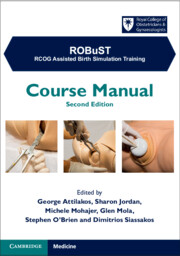Book contents
- ROBuST
- Reviews
- ROBuST
- Copyright page
- Contents
- Contributors
- Preface
- Acknowledgements
- Abbreviations
- Chapter 1 Trends in Assisted Vaginal Birth and Future Practice
- Chapter 2 Indications and Assessment for Assisted Vaginal Birth
- Chapter 3 Non-technical Skills
- Chapter 4 Vacuum-Assisted Birth
- Chapter 5 Non-Rotational forceps and Manual Rotation
- Chapter 6 Rotational Forceps
- Chapter 7 Caesarean Section at Full Cervical Dilatation
- Chapter 8 Medico-Legal Aspects of Assisted Vaginal Birth (AVB)
- Chapter 9 Analgesia and Anaesthesia for Assisted Vaginal Birth
- Index
- References
Chapter 9 - Analgesia and Anaesthesia for Assisted Vaginal Birth
Published online by Cambridge University Press: 06 June 2024
- ROBuST
- Reviews
- ROBuST
- Copyright page
- Contents
- Contributors
- Preface
- Acknowledgements
- Abbreviations
- Chapter 1 Trends in Assisted Vaginal Birth and Future Practice
- Chapter 2 Indications and Assessment for Assisted Vaginal Birth
- Chapter 3 Non-technical Skills
- Chapter 4 Vacuum-Assisted Birth
- Chapter 5 Non-Rotational forceps and Manual Rotation
- Chapter 6 Rotational Forceps
- Chapter 7 Caesarean Section at Full Cervical Dilatation
- Chapter 8 Medico-Legal Aspects of Assisted Vaginal Birth (AVB)
- Chapter 9 Analgesia and Anaesthesia for Assisted Vaginal Birth
- Index
- References
Summary
This chapter deals with methods of analgesia and anaesthesia for AVB. Previous chapters have discussed the decision-making processes underpinning which type of birth is required and where to perform it; this chapter details the various types of analgesia and anaesthesia used in different situations.
AVB can be undertaken either in the labour room or in theatre. Estimation of the likelihood of vaginal birth proving successful is pivotal to informing decision-making in terms of analgesic and anaesthetic requirements.
- Type
- Chapter
- Information
- ROBuST: RCOG Assisted Birth Simulation TrainingCourse Manual, pp. 130 - 141Publisher: Cambridge University PressPrint publication year: 2024

